BY LOIS MANSFIELD | ENVIRONMENTORS, JAN DARRALL & LAURA PARTIN GTON | FRIENDS OF THE LAKE DISTRICT
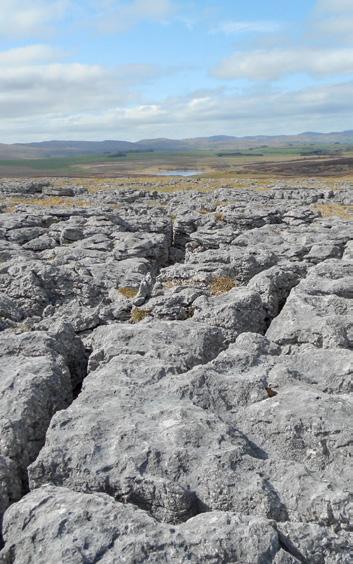

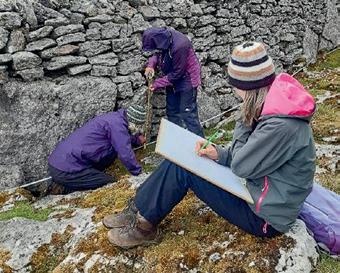
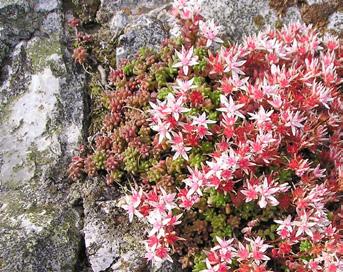
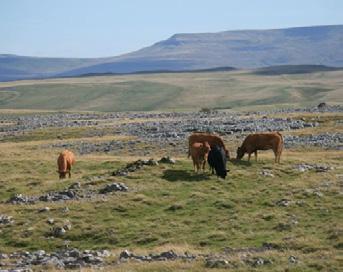
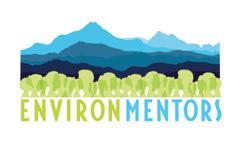

SUMMARY REPORT AUGUST 2023
Investigating the Public Benefits of Little Asby Common Using a Multiple Capitals Approach
English Stonecrop
WDLPS Wall Surveying
© Rob Fraser
Long View Tree & Limestone Pavement
Research commissioned by Friends of the Lake District
Limestone Pavement
Cows on Little Asby Common
Friends of the Lake District (FLD) is a charity who campaigns for the landscapes of Cumbria. We own 12 areas of land across the County, including Little Asby Common near Orton. Our work includes commenting on policy proposals and plans, from national to local, demonstrating best practice on our land and feeding this experience back into our policy work, and engaging the public in the outdoors and landscape issues.
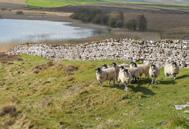
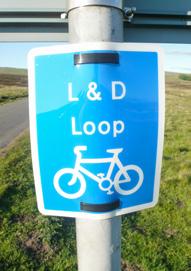
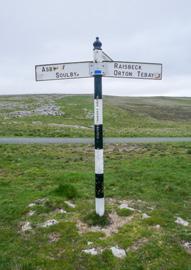

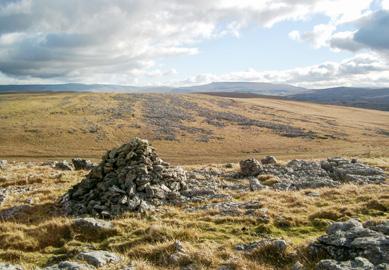
Landscape is multi-faceted, it includes the use of all the senses and provokes a range of emotions. It also has a range of different attributes, including natural and cultural. Our policy responses and land management consider all landscape attributes.
The policy context in which we are working is changing rapidly with a greater focus on putting a financial value on landscape attributes, some of which are hard to quantify. FLD has always been against the quantification and monetarisation of landscapes as so much depends on a person’s emotional reaction. However, the Government want to bring in more private money to the environmental and land management sector, which will involve valuing the landscape benefits and deliverables and putting a monetary value on them.
FLD commissioned a natural capital assessment of all its landholdings in 2023 to trial and gain experience about this process. In doing this, we became increasingly frustrated that the methodologies for such assessments never included elements of the cultural landscape, did not take account of the skills and time of those who maintained such landscapes, or of their contribution to the communities and economies in which they lived. Such assessments were only looking at the benefits of one aspect of our landscapes, but what about the other elements which are equally important?

Friends of the Lake District, Murley Moss, Kendal, LA9 7SS | Tel: 01539 720788 | Email: info@fld.org.uk Website: www.friendsofthelakedistrict.org.uk | Charity Number: 1100759 | Company Number: 4878364
Introduction LITTLE ASBY COMMON MULTIPLE CAPITALS SUMMARY REPORT Research commissioned by Friends of the Lake District 02
© Rob Fraser
Public Event – Long View Walk
Lapwing
Cast Iron Signpost
Cairn & View to the South
Cycle Route Sign Sunbiggin Tarn
Research commissioned by Friends of the Lake District
Little Asby Common
Little Asby Common, located in the heart of the Westmorland Dales, is 464ha of upland common, including limestone pavement and Sunbiggin Tarn, east of Orton in East Cumbria. It was bought by Friends of the Lake District in 2003.
We know that Little Asby Common is a rich landscape in terms of its nature and cultural heritage. It is part of a Special Area of Conservation (SAC) and a Site of Special Scientific Interest (SSSI) in its own right. The limestone pavement is protected by a Limestone Pavement Order. It has a range of habitats including heather moorland, limestone grassland, limestone pavement and has one of only three marl tarns in North England. The common is grazed by seven active commoners with cattle and sheep and is in a Higher Level Scheme agri-environment agreement. As of 2016 the common and surrounding area is within the Yorkshire Dales National Park. It is crossed by the Coast to Coast national trail and also the Coast to Coast cycle route, Lakes to Dales cycle route and is also open access land. The common is rich in archaeology with 200 archaeological sites being recorded, including long houses, cairn fields and co-axial field systems more commonly found in the south west. Research shows activity on the common for the last 12,000 years.
Despite the richness of Little Asby Common, many of the attributes of the landscape that we know are important are often overlooked by decision makers because others feel they have no financial value. This has led FLD to work with Prof. Lois Mansfield to produce a groundbreaking report which calculates all the benefits of Little Asby Common, providing a Multiple Capitals Account of its total value, not just a part of its value.
We are grateful to Natural England for providing financial support for this work.
This document provides a summary of the full report. The full report is available at: www.friendsofthelakedistrict.org.uk/multiple-capitals-full-report
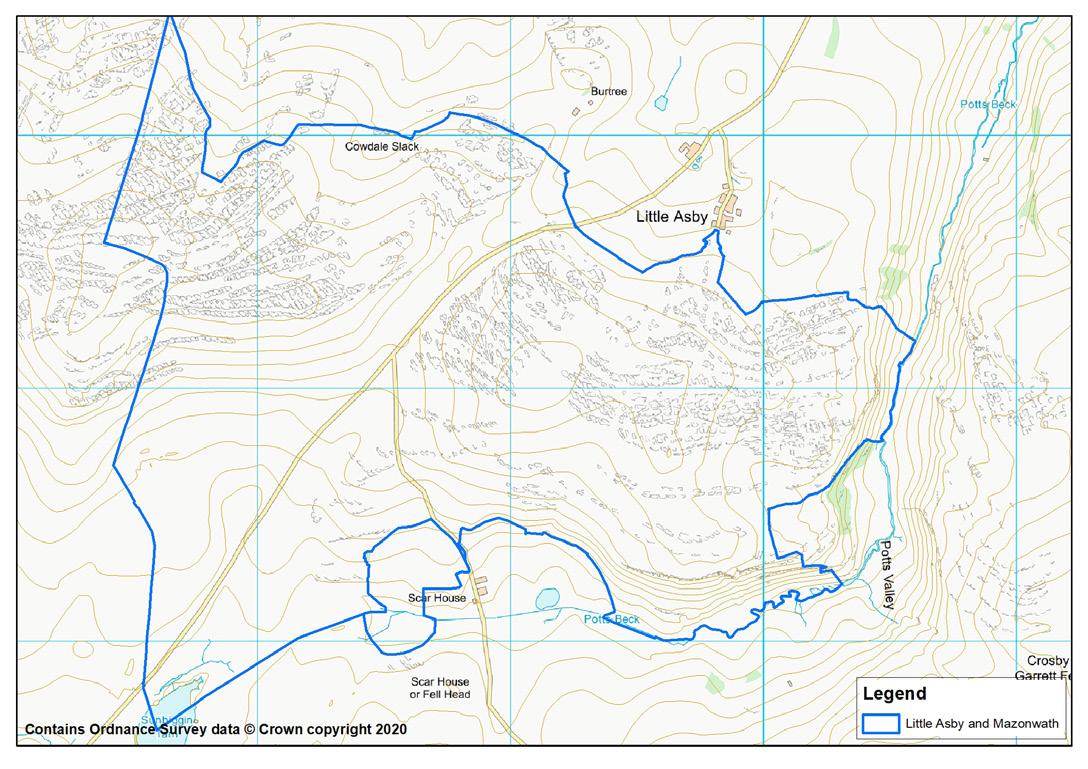
LITTLE ASBY COMMON MULTIPLE CAPITALS SUMMARY REPORT
03
What is Capital & Why
is it Important?
At its simplest, capital means the point ‘when resources or assets are invested to create new resources’1. Individuals, communities and/or societies can use capital to create a better standard of living and quality of life, and to make us more resilient and adaptable to change. Capitals should therefore be seen as a positive benefit.
Capitals include:
• environmental resources
• our own individual capabilities and capacity
• how we work together to solve challenges
Types of Capital & How They Relate to a Landscape Natural Capital
Probably the most well-known capital is natural capital; such as geology, soil, peat, biodiversity and habitats. These landscape building blocks also provide additional ecosystem services from our environment. For example, trees or a peat bog (natural capital) will lock up carbon, helping to mitigate climate change (ecosystem service).

Human Capital
In order to maintain and enhance our natural capital and the ecosystem services they supply, we need people. People, or human capital, bring with them knowledge, experience, and skills to shape landscapes for our needs. Many different skills are needed for creating, maintaining and/or improving landscape features. For example, in Cumbria, livestock care, dry stone walling, hay making, and heather management are all needed to maintain our iconic natural capital. Human capital also refers to how we benefit as individuals from a place, such as health and well-being benefits from recreation and quiet enjoyment of a landscape.

• our cultural strengths and
• where we get the resources to make change happen to improve our circumstances
1 Flora CB., Flora JL & Fey S (2004) Rural Communities: Legacy and Change, Second Edition Boulder: Westview: page no. 2
Potts Valley
LITTLE ASBY COMMON MULTIPLE CAPITALS SUMMARY REPORT Research commissioned by Friends of the Lake District 04
Volunteers Walling
LITTLE ASBY COMMON MULTIPLE CAPITALS SUMMARY REPORT
Research commissioned by Friends of the Lake District

Social Capital
Where people work collectively together, we refer to this as social capital. This type of capital is enhanced through trust, common rules and norms, and developing networks of individuals and groups working for the common good. On Little Asby Common, the graziers have formed a Commoners’ Association, who work together to manage the land for a range of pre-agreed objectives. Community projects such as those offered by the Westmorland Dales Landscape Partnership Scheme also provide opportunities for people to improve their social capital.
Cultural Capital
Over time, people become familiar with a place or location and understand how to adapt it to make the best use of its resources. As a result, they develop a range of specific practices and customs such as communal grazing, shepherding, hefting and gathering. To make these practices more effective, different structures have been built into the landscape, such as dry stone walls, bields for stock to shelter behind, and historically, shepherd bothies in which to shelter. Together, these intangible processes and tangible structures constitute what is known collectively as cultural capital. Heritage is also a form of historic cultural capital, such as archaeological finds, monuments and sites. A third type of cultural capital is landscape aesthetics, referring to the enjoyment and pleasure we feel through the observation of scenery.
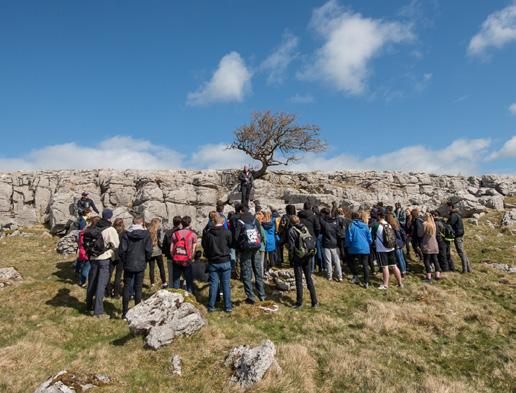

Financial Capital
Financial capital can enter the Common through private means, subsidies like the old headage payments to support farming or agri-environment schemes to enhance biodiversity and other public goods. Financial capital can also come from celebratory projects such as the Westmorland Dales Landscape Partnership Scheme (WDLPS), or from locals or visitors supporting local shops and businesses.
Multiple Capitals
The landscape we know as Little Asby Common is therefore a product of different capitals working together. These can be to its benefit, such as having appropriate grazing regimes to support biodiversity. At other times it can be detrimental, for example, when people ride horses on the common or wild camp overnight which may cause damage or spoil the enjoyment of legal users. In summary, landscapes are created through the interrelationship between people and the place in which they live, work and visit.
Cows on Little Asby Common
©
Rob Fraser
Hawthorn by Night
Public Event – Long View Walk
05
Ecosystem Services
Ecosystem Services are related to capitals and are benefits gained by people from the natural environment2 For example, flood prevention, climate change mitigation, air quality regulation, pollination, and biodiversity. By creating capital and looking after it we can also improve the available ecosystem services of an area.

Contains public sector information licensed under the Open Government Licence v3.0 www.nationalarchives.gov.uk/doc/open-government-licence/version/3
Countryscape:
LITTLE ASBY COMMON MULTIPLE CAPITALS SUMMARY REPORT Research
06
2 Porter J. Jagota L., Brookes J., Mahony P Howard B., Walter R, Hunt D (2014) ‘Ecosystem Approach
Handbook’.
Manchester
commissioned by Friends of the Lake District
Capital
In2018,NaturalEnglandpublished‘NaturalCapitalIndicators:fordefiningandmeasuringchangeinnaturalcapital’.Thisreportidentifiedkey propertiesofthenaturalenvironmentvitalforthelong-termsustainabilityofbenefits,whichcanactasindicatorsofchange.
NaturalEnglanddevelopedaninnovative,systematicapproachto identifyattributesofthenaturalenvironmentunderpinningthe provisionofecosystemservices.Thisapproachtookaccountofthe expertopinionofnearly90specialistsinNaturalEnglandandthe EnvironmentAgency.Fromthislistofattributes,indicatorsfor measuringchangewereselectedandprioritisedintoshortlistand longlistindicators.Principleswereestablishedfordefiningrobust indicators,statingthattheyshouldbe;transparent,relevant, andscalable.Datasetsthatcould
Logicchainswereusedtoidentifytheattributesrelevanttothe provisionofecosystemserviceswithineachbroadhabitat.Onlythe keyecosystemserviceswereanalysedforeachhabitatandnotall attributeswereidentifiedasindicators.Foranexampleofalogic




Since the UN Millenium Ecosystem Assessment3 and the UK National Ecosystem Assessment4, there has been an increasing interest in attaching financial value to natural capital and ecosystem services. The argument is that putting a a value on goods and services which do not normally have an everyday financial worth (i.e. a price), enables decision-making about how resources are used5
Pressures and Drivers of Change
Management Interventions
Other Capital Inputs
Contains public sector information licensed under the Open Government Licence v3.0 www.nationalarchives.gov.uk/doc/open-government-licence/version/3
woodland assets to the ecosystem service; air quality improvement. S


Vegetation:
-Age structure
-Canopy (density and spp. composition)
To date, much of this valuation work has focussed on valuing nature and its benefits. Increasingly, society has expressed a desire to value other types of capital such as human, social and cultural. Arguably, if a valuation approach can be applied to natural capital, then similar valuation processes can be utilised for other types of capital.
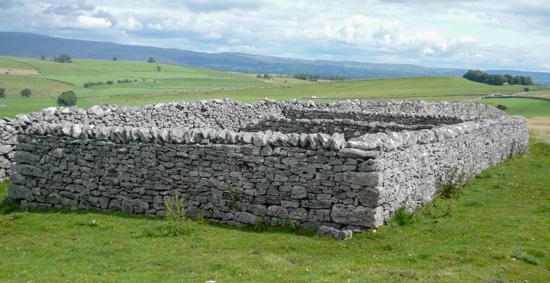
-Leaf surface area and duration across year
-Understorey (density and spp. composition)
-Shadiness
• Species Composition:
-Naturalness of biological assemblage (no. of trophic levels and spp. composition within levels)
• Climatic:
-Air temperature
-Sunlight/cloud cover
-Precipitation (inc.distribution, seasonality, intensity)


• Geology and topography:
-Geology
Such an exercise should produce a Multiple Capitals Account for a site, activity, or organisation, i.e. an assessment of all the types of benefit a site provides. This can be used to:
-Altitude, slope, aspect, landform
-Snow cover and length of snow lie
-Frequency of freeze thaw
-Wind (especially for wind throw)
-Structural diversity
• Enable society to recognise the total financial value of a project, site, or activity

-Cover/bare soil
-Surface roughness/microtopography
-Tree health
-Catchment characteristics

-Drought
-Length of growing season (vegetation)


• Create a baseline to monitor the effectiveness or additionality of some form of management
• Enable decision makers to weigh the total capital costs and benefits of proposed schemes to make more informed and rounded decisions
3 UN Millenium Ecosystem Assessment (2001). Accessed at: https://www.millenniumassessment.org/en/index.html on: 22/08/23
4 UK National Ecosystem Assessment (2014) The UK National Ecosystem Assessment: Synthesis of the Key Findings. UNEP-WCMC, LWEC, UK. Accessed at: http://uknea.unep-wcmc.org on: 14/04/23
5 TEEB (2011a), ‘The Economics of Ecosystems and Biodiversity in National and International Policy Making. Edited by Patrick ten Brink. Earthscan: London and Washington. Accessed at: https://teebweb.org/publications/teeb-for/national-and-international-policymakers on: 14/04/23
TEEB (2011b) TEEB Manual for Cities: Ecosystem Services in Urban Management. The Economics of Ecosystems and Biodiversity (TEEB): Geneva. Accessed at: https://teebweb.org/publications/teeb-for/national-and-international-policymakers on: 14/04/23
5 Quantity Quality Location ECOSYSTEM ASSET ECOSYSTEM SERVICES BENEFITS VALUE
Heather Moorland
LITTLE ASBY COMMON MULTIPLE CAPITALS SUMMARY REPORT Research commissioned by Friends of the Lake District 07
Restored Sheepfold
Measuring Capital & Calculating a Multiple Capitals Account
To calculate a Multiple Capitals Account for Little Asby Common, we needed to break the landscape down into its constituent parts (attributes) and group them into the different capitals and sub-capitals (dimensions). This is shown in Table 1. We did this in several ways; through primary sources including field survey, photographic analysis, an online survey, a Commoners’ Survey, workshops and a secondary data desktop study of published materials (Table 1).
The next step was to calculate a financial value for each landscape attribute. We used three techniques that have been developed through wide scale research into current practices:
1. Direct Market Value – things which have a real-world financial figure attached to them. For example, spend in local shops and businesses, livestock unit gross margins or grant awards.
2. Benefits Transfer – using financial figures derived from other research studies or accepted databases. For example, the value of SSSI habitats. 6, 7
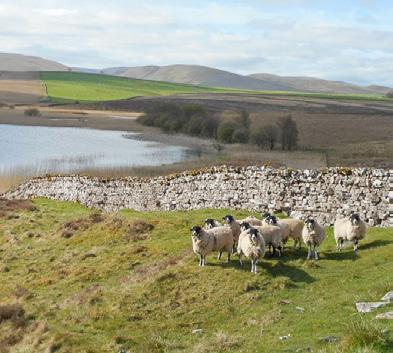
3. Willingness To Pay (WTP) – an HMRC accepted perceptual measure derived from an individual identifying how much they are willing to pay for X or Y. We calculated these figures from our online survey and workshops.
Each landscape attribute had its own methodology to calculate its financial value and create a financial balance sheet. This included those landscape attributes which were beneficial (added) or detrimental (subtracted). We calculated three accounts using differing calculation methodologies:
• Account A – Total Maximum Value (Public Responses i.e. all WTP and Direct Market Values and infilled with Benefit Transfers)
• Account B – Total Threshold Value (Max. Benefit Transfers, Direct Market Values and gaps infilled with total land area WTP from surveys when no other methodology is available)
• Account C – Total Minimum Value (Min. Benefit Transfers, Direct Market Values and gaps infilled with direct WTP from surveys when no other methodology was available.
For this summary report we have decided to publish Account B fully as most representative of the situation. Over the following pages, our results are outlined for each capital and then as a full multiple capitals account.
A Note on Double Accounting
Given the nature of landscape, it is possible that an attribute can have multiple capitals attached to it resulting in double accounting. This refers to the way in which phenomenon A is measured twice because it is part of the character of phenomena B and C, so in measuring B and C separately we count A twice. An example would be a dry stone wall which has embedded in it aspects of natural (geology and homes for biodiversity), human (knowledge and skills to build a wall) and cultural (tangible feature forming part of a farmed upland landscape) capital. We endeavoured, therefore to avoid double accounting in our methodology.
6 Christie M & Rayment M (2012) ‘An
policy in England and Wales’ Ecosystem Services Vol 1 p70 to 84
ENCA (2021) Data Services Handbook Enabling a Natural Capital Approach guidance - GOV.UK (www.gov.uk)
economic assessment of the ecosystem service benefits derived from the SSSI biodiversity conservation
7
LITTLE ASBY COMMON
Research
08
Sheep by Sunbiggin Tarn
MULTIPLE CAPITALS SUMMARY REPORT
commissioned by Friends of the Lake District
Table 1 – Little Asby Common and its landscape attributes, dimensions and capitals
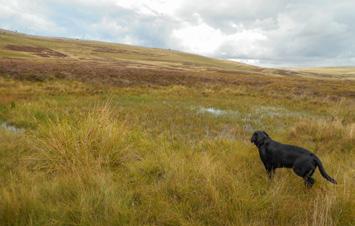

Attribute Dimension Capital Data Source Limestone Pavement & Geology Geodiversity Natural G, F Habitats Ecosystems Natural D, F Air Quality Air Natural D Carbon Sequestration Natural Processes & Functions Natural D Species Ecosystems Natural D Water Storage & Flood Management Freshwater Natural G Site Management (Volunteers) Labour Human S, P, W Site Management (WDLPS staff) Labour Human P Site Management (FLD staff) Labour Human P Site Management (NE Staff) Labour Human E Site Management (Contractors) Labour Human D Volunteer Well-Being Well-Being Human S, P Visitor Recreation Well-Being Well-Being Human S Discovery & Learning Education Human S, P, W Social Learning Education Human S, P, W Dry Stone Walling Skills Human S, P, W Picnicking Recreation & Sport Social S Communal Grazing Common Rules & Norms Social S, P, D Commoners’ Association Bonding Network Social S, P, D Commoners’ Labour Reciprocity & Exchange Social S Volunteers SROI Reciprocity & Exchange Social S Local Community (minus Commoners) SROI Bridging Network Social S Dark Skies Landscape Aesthetics Cultural S, D, W Visitor Visit Value Recreation & Sport Cultural S, D, W Vistas & Views Landscape Aesthetics Cultural S, F, W Tranquillity Landscape Aesthetics Cultural S, D, W Openness & Wildness Landscape Aesthetics Cultural S, W Archaeology & Built Heritage Heritage Cultural S, D, P, W Dry Stone Walls Heritage Cultural S, G, P, W Art & Literature Heritage Cultural S, W Pathways & Cycleways Access Cultural S, F, W Grants Currency Financial D, P Farm Gross Margins Currency Financial D, S Multiplier Effects (Farm Businesses) Currency Financial D, S Utilities Currency Financial D, P, F Multiplier Effects (Local Shops) Currency Financial S, W
Key: D – Desktop publications S – Online and commoners’ surveys F – Fieldwork, G - GIS data manipulation E – Extrapolated from other evidence P – Personal communication W – Workshop Seavy Dub Igs Site – 3 Layers of Limestone LITTLE ASBY COMMON MULTIPLE CAPITALS SUMMARY REPORT Research commissioned by Friends of the Lake District 09
Natural Capital Sub-Account
For natural capital we calculated the value of six landscape attributes: Limestone Pavements & Geology, SSSIs (Habitats), Species, Air Quality, Carbon Storage, and Water Storage & Flood Management. Their total financial worth came to £1,543,979.37, with a detailed breakdown in Table 2. For natural capital there was a detractor of £263,940.12 due to unfavourable condition of one SSSI unit.
Table 2 – Natural Capital Sub-Account Little Asby Common
Limestone Pavement & Geology The area of limestone pavement and the Common’s total size were calculated using GIS. WTP, derived from the online survey and workshops, was used to calculate the value of Limestone Pavement. This was valued roughly twice as much as the general geology at £1,410.15 for the site.
Habitats (Value of SSSIs) As the whole site is a SSSI, we were able to employ a Benefits Transfer method using a National Vegetation Classification (NVC) vegetation survey conducted for FLD. This allowed us to account for habitats in favourable condition and those at different stages of recovery. Habitats were valued at £375,159.42 and after removing those units in unfavourable condition, £111,218.50. We also asked survey respondent’s WTP for habitats collectively on the Common; consequently, the public valued habitats at £848,412.43, almost an eightfold increase in valuation to the benefits transfer method.
Air Quality For this attribute we combined research8 regarding the government standard of PM10 particulates that cause air pollution, with vegetation purification ability and research recently completed in Exmoor9. We compared this technique with WTP from the online survey and workshops. The public valued air quality many multiples greater than the scientific methodology accepted by the government (£598,220.45 cf. £3,114.54).
Species Data from the Cumbria Biodiversity Data Centre were merged with SSSI survey species lists to develop an overall count found at Little Asby Common. This count was multiplied by the WTP result from the online survey and workshops. Quality of species lists was a challenge here, and the summative figure given in Table 2 is a gross underestimation of reality.
Carbon Sequestration Using combined Benefits Transfer techniques of tonnes of CO2/C O2e sequestered/ ha/year and vegetation type, we employed the Green Book’s10 social value of carbon to derive a figure of £54,356.13. Once again, WTP from survey and workshop respondents generated a much higher figure of £368,706.46.
Water Storage & Flood Management The value of this attribute was calculated using WTP as no alternative methodology was discovered over the duration of this project. The Enabling a Natural Capital Approach (ENCA) database contained only marine benefits transfer techniques. In relation to other natural capital landscape attributes, water storage & flood management was valued the least by survey and workshop respondents.
8 White MP, Elliott LR., Taylor T., Wheeler BW., Spencer A., Bone A., Depledge MH., Fleming LE (2016) ‘Recreational physical activity in natural environments and implications for health: A population based cross-sectional study in England’ Preventive Medicine Vol 91 p383 to 388
9 Faccioli M., Zonaveld S., Tyler CH. & Day B. (2023) ‘Does local Natural Capital Accounting deliver useful policy and management information? A case study of Dartmoor and Exmoor National Parks’ Journal of Environmental Management Vol 327 https://doi.org/10.1016/j. jenvman.2022.116272
10 HMRC (2022) ‘The Green Book’ Accessed at: www.gov.uk/government/publications/the-green-book-appraisal-and-evaluation-in-centralgovernent/the-green-book-2020 on 13/04/23
Dimension Attribute Benefit Detractor Geodiversity Limestone Pavement & Geology 484,090.29 Ecosystems Habitats 375,159.42 263,940.12 Air Air Quality 3,114.54 Natural Processes & Functions Carbon Sequestration 54,356.13 Ecosystems Species 329,968.43 Freshwater Water Storage & Flood Management 297,290.56 Sub Total 1,543,979.37 263,940.12
LITTLE ASBY COMMON
10
MULTIPLE CAPITALS SUMMARY REPORT Research commissioned by Friends of the Lake District
Human Capital Sub-Account
For human capital we calculated the value of ten landscape attributes; five of which included site management inputs from volunteers, WDLPS staff, FLD staff, Natural England staff and contractors. The other five attributes being Volunteer Well-Being, Visitor Well-Being, Discovery & Learning, Social Learning, and Dry Stone Walling Skills. Their total financial worth came to £1,915,585.53 with a detailed breakdown on Table 3. For human capital there was a detractor of £6,128.02 because of salary deductions (pensions, NI and income tax).
Labour Little Asby common has benefitted from labour from a range of groups dedicated to different aspects of site management. Volunteer time used the standard HLF rate of £50/day, whereas employed staff calculations used pro rata salary information with the normal payroll deductions. Site management by contractors used the contract values.
Well-Being Both volunteer and visitor well-being was derived from online survey and workshop data, providing amounts of time spent on the Common over a year. This information was combined with the Benefits Transfer techniques of METs (the amount of energy expended when carrying out different forms of exercise) and QALYs (the money saved for one year of exercise which keeps people out of the NHS). Regarding QALYs, there are different rates available; NICE suggests £20k (2012), Yorkshire Water used an updated figure of £25k in their work and the Green Book suggests £60k. For this exercise we used the latter estimate of £60k, given the pre-eminence of the Green Book for government financed projects.
Dry Stone Walling Skills
Two options were available to calculate the value of dry stone walling skills, either through applying the current Countryside Stewardship walling rate of £31.91/metre valued at £427,338.72 (under option BN12) or by employing the market rate for walling provided by the Dry Stone Walling Association. We decided to use the DSWA’s rate of £50/metre as it more closely reflects the true value of this skill and that most land owners have to top up the CS money to pay the waller. GIS was used to measure the total length of wall around the Common. Salary deductions were not factored in here, as it will depend on the number of full-time job equivalents involved in such a task and this was beyond the scope of this work.
Learning Two landscape attributes valued learning: first was discovery and learning for locals and visitors, derived from total WTP from the surveys and workshops combined with the site’s area; and second, social learning calculated from events organised by a range of providers. Events included were research and field trips (such as community archaeological digs), educational school visits, group activities such as dry stone walling volunteering and specific awareness raising events. The value of each of these types of activity was derived from the online surveys and workshops through total WTP.
Dimension Attribute Benefit Detractor Labour Site Management (Volunteers) 13,600.00 Labour Site Management (WDLPS staff) 4,885.10 1,234.64 Labour Site Management (FLD staff) 1,734.68 350.48 Labour Site Management (NE Staff) 444.22 119.60 Labour Site Management (Contractors) 79,877.00 4,357.00 Well-Being Volunteer Well-Being 39,950.23 Well-Being Visitor Recreation Well-Being 214,108.26 66.30 Skills Dry Stone Walling 669,600.00 Education Discovery & Learning 778,910.72 Education Social Learning 112,475.32 Sub Total 1,915,585.53 6,128.02
Table 3 – Human Capital Sub-Account Little Asby Common
LITTLE ASBY COMMON MULTIPLE CAPITALS SUMMARY REPORT Research commissioned by Friends of the Lake District 11
Social Capital Sub-Account
For social capital we calculated the value of six landscape attributes; this capital was the most complicated to assess as methodology is weakest for the theme of landscape, despite the work for Rose Regeneration11 in the broader Social Return on Investment (SROI) sphere.
The attributes included: Picnicking identified as social activity; Communal Grazing, the Commoners’ Association, Commoners’ Labour on the common, Volunteer SROI and Local SROI as measured through sense of community. Their total financial worth came to £1,115,005.13 with a detailed breakdown on Table 4. For social capital there was a single detractor of £5,680.29 because of salary deductions from commoners’ labour (pensions, NI and income tax).
Table 4 – Social Capital Sub-Account Little Asby Common
Picnicking Data were gathered from the online survey and workshops. No one indicated they had picnicked on the common; if they had we would have employed the total WTP figure derived from the survey which was £791/ year.
Communal Grazing The value of communal grazing employed a total WTP figure derived from the online survey and workshops. A figure of £1,644.02 per hectare was calculated meaning the communal grazing at Little Asby Common was valued at £777,029.61 by the public. We would caution against using this figure as a Benefits Transfer to other common land areas, because WTP as a technique tends to be site, time and respondent specific, but it may give a broad indication of the value of common land to the public.
Commoners’ Association To calculate the value of the Commoners’ Association we opted for a simple calculation of the financial value of commoners’ meetings per year in relation to the association membership. The figure derived is therefore low in relation to its real value. We recognise this is one of the more complex landscape attributes to quantify and see this as an area of future development.
Commoners’ Labour Labour was calculated based on estimates provided from the commoners’ survey in proportion to median gross salaries published in Nix12 minus the standard salary deductions.
Volunteer & Local Community Social Return on Investment Volunteer counts supplied by WDLPS were fed through Rose Regeneration’s Social Value Engine (SVE) softwareTM to calculate volunteer Social Return on Investment. For the Social Return on Investment of the local community we used another element of the SVE, ‘a sense of belonging to a community’, a question which was incorporated in our online survey. It is of note that only 29 local people generate an Social Return on Investment for sense of belonging value of £181,250. We could have extrapolated for the entire population of the surrounding settlements (est. 298, 2021 Census) but opted not to do so here to avoid distorting the survey data.
11 Rose Regeneration (2022) ‘Social Value EngineTM’ Accessed at: https://socialvalueengine.com on 23/03/23
12 Redman G (2023) ‘John Nix Pocket book for Farm Management’ Agro Business Consultants Ltd: Melton Mowbray
Dimension Attribute Benefit Detractor Recreation & Sport Picknicking 0 Common Rules & Norms Communal Grazing 777,029.61 Bonding Network Commoners’ Association 1,702.80 Reciprocity & Exchange Commoners’ Labour 26,396.37 5,680.29 Reciprocity & Exchange Volunteers SROI 128,626.35 Bridging Network Local Community (minus Commoners) SROI 181,250.00 Sub Total 1,115,005.13 5,680.29
LITTLE ASBY COMMON MULTIPLE CAPITALS SUMMARY REPORT Research commissioned by Friends of the Lake District 12
LITTLE
ASBY COMMON MULTIPLE CAPITALS SUMMARY REPORT
Research commissioned by Friends of the Lake District
Cultural Capital Sub-Account
For cultural capital we calculated the value of eleven landscape attributes covering the broad dimensions of landscape aesthetics, heritage and relevant aspects of recreation.
The attributes included: Tranquillity, Dark Skies, Openness & Wildness, Vistas & Views, Dry Stone Walls, Visitor Visit Value, Access, Archaeology & Built Heritage, Local History & Place Names, Art & Literature, and Inspiration. Their total financial worth came to £22,147,848.17 with a detailed breakdown on Table 5. For cultural capital there was a single detractor of £96.12 related to overnight camping nights which is not permitted on the common.
Table 5 – Cultural Capital Sub Account
Tranquillity, Dark skies, Openness & Wildness, Vistas & Views
These four landscape attributes were individually valued by survey and workshop respondents using WTP per hectare and scaled up, to represent the entire common area. Of these four, the most valued was tranquillity with a total WTP per hectare of £2,180.03, followed by vistas and views (£1,559.09). Dark skies were valued the least at £542.59, it is difficult to understand why this latter attribute as valued so low, it could be lack of recognition as to the rarity of this, or that current society has adapted to higher levels of light pollution than people of previous generations.
Dry Stone Walls
The cultural value of dry stone walls was valued using two methods. The first calculated the total WTP by multiplying the survey’s total WTP (£2,777.10) by the number of metres of wall found around the site. The second technique employed a partially objective benefits transfer method devised by Powell at al. (2019)13 to value the ecosystem services derived from dry stone walls. This second approach has many appropriated forms of capital within it; having said this, it valued the walls at £4,149,608.07, nine times lower than the WTP methodology.
Visitor Visit Value
There are three benefits transfer techniques available to calculate visitor visit value. We chose to use Exeter University’s NEVO14 technique because it had much more localised data driving the calculation. Having said this, it used data applicable to the whole of the Lune and Eden catchments multiplied by the number of visits to the Common recorded from the survey, which probably over-estimated the valuation.
Access The total number of metres of minor roads and Rights of Way available for the general public to access were multiplied by the WTP results from the survey and workshop.
This attribute included counts of known structures and artefacts found on the Common. These were multiplied by WTP answers provided by survey and workshop respondents. Interestingly, artefact finds were valued twice as much as structures.
Archaeology & Built Heritage
13 Powell J., Lake J., Gaskell P., Courtney P., & Smith K (2019) ‘Developing an ecosystem approach – dry stone walls’ research Report Series no43/201, Historic England
14 Biner A., Bateman IJ., Day B (n.d.) ‘Natural Environment Valuation Online tool (NEVO).’ Accessed at: www.leep.exeter.ac.uk/nevo) on 23/02/23
Dimension Attribute Benefit Detractor Landscape Aesthetics Dark Skies 256,449.74 Landscape Aesthetics Vistas & Views 736,888.30 Landscape Aesthetics Tranquillity 1,030,369.38 Landscape Aesthetics Openness & Wildness 930,027.91 Recreation & Sport Visitor visit value 181,047.36 96.12 Recreation & Sport Access 12,032,729.60 Heritage Archaeology & Built Heritage 1,029,024.88 Heritage Local History & Place Names 1,043,116.48 Heritage Dry Stone Walls 4,149,608.07 Heritage Art & Literature 252,862.40 Inspiration Inspiration 505,724.80 Sub Total 22,147,848.67 96.12
13
Local History & Place Names These two landscape attributes were calculated using WTP, with the former being twice as valued as the latter.

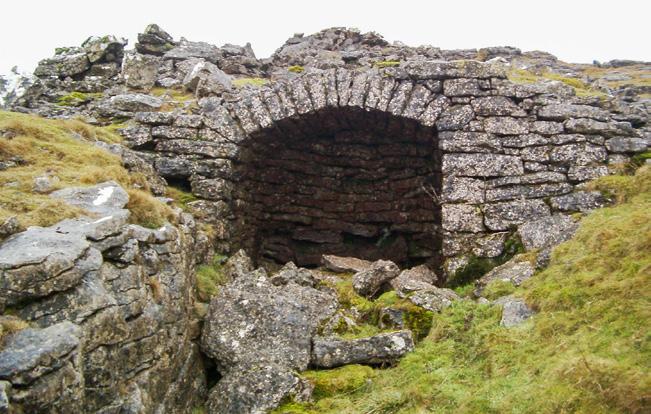


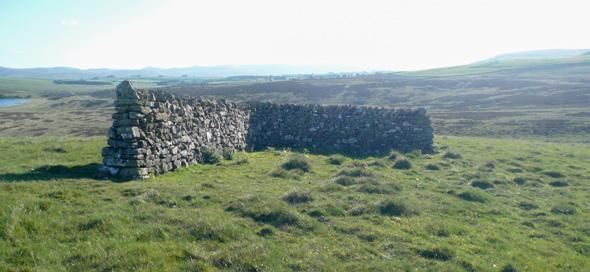

Art & Literature This landscape attribute had a low WTP value (total of £535), in fact the lowest WTP of all attributes measured in this way. Given there is no specific art or literary works attributed to this Common this is not surprising. It would be interesting to conduct a WTP exercise on a landscape with known artistic or literary connections, such as the neighbouring Lake District to see how values change.
Inspiration The final cultural capital attribute, inspiration, was measured using WTP from the survey and workshop.
 Walls Bield
Lime Kiln
Little Asby Treefold
Cast Iron Signpost
Archaeology Excavation
Walls Bield
Lime Kiln
Little Asby Treefold
Cast Iron Signpost
Archaeology Excavation
LITTLE ASBY COMMON MULTIPLE CAPITALS SUMMARY REPORT Research commissioned by Friends of the Lake District 14
© Rob Fraser
LITTLE ASBY COMMON MULTIPLE CAPITALS SUMMARY REPORT
Research commissioned by Friends of the Lake District
Financial Capital
The final capital to be measured was financial capital, all of which were able to use direct market values in the calculations. Five different landscape attributes were calculated: Grants, Farm Gross Margins, Multiplier Effects for Farm Businesses and from Local Shops, and Utilities (Table 6). The total value of financial capital was £876,468.67 with a detractor of £813,729.50 derived from the WDLPS HLF grant.
Table 6 – Financial Capital Sub-Account
Grants Grants can be allocated as both benefits or detractors in a financial account. We decided to recognise agri-environment (AE) payments as a benefit as they provided income to the commoners. In contrast, we allocated the Westmorland Dales Landscape Partnership Scheme’s HLF monies for a single year as a detractor, mainly to avoid double accounting across the full budget (for example, volunteer days, volunteer health and well-being, educational visits and staff salaries all came about through the WDLPS). These attributes came to a total value of £1,115,005.13; and by removing this and the WDLPS budget from the overarching landscape MCA suggests that the £38,539 AE yearly payment has a return on investment of 1:659 for the entire of Little Asby Common.
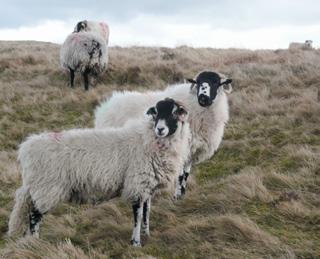

Farm Gross Margins Farm gross margins were calculated using Nix15 and the total area of common land.
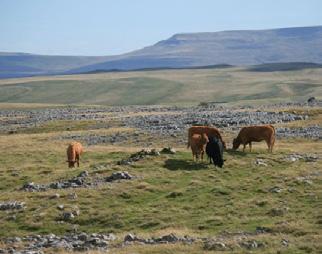
Multiplier Effects (Farm Businesses & Local Community)
Data gathered from the Commoners’ Survey was used to calculate spend by farm businesses in the local community. A proportion was then taken depending on how much the common donated to the overall average gross margin of all the farms operating on Little Asby Common. The types of spend included: vet and feed bills, accountants, wallers and fencers, contractors, auction mart fees and so on.
For the local community, which included visitors and locals, the multiplier considered non-farm spend in the local economy in shops, pubs, cafes and accommodation.
Utilities The final financial capital focused on the benefits of wayleaves, easements and payments from utility services which crossed the common under or overground. Water pipes, electricity supplies and communication cables and poles were included. We did not factor in a visual detractor for pylons and cables, which should be considered in a future account.
15
Redman G (2023) ‘John Nix Pocket book for Farm Management’ Agro Business Consultants Ltd: Melton Mowbray
Dimension Attribute Benefit Detractor Currency Grants 38,539.17 813,739.50 Currency Farm Gross Margins 191,168.00 Currency Multiplier Effects (Farm Businesses) 137,182.50 Currency Multiplier Effects (Local Shops) 501,438.00 Infrastructure Utilities 8,141.00 Sub Total 1,115,005.13 813,739.50
15
Multiple Capitals Count for Little Asby Common
Little Asby Common Multiple Capital Account B 2022/23 (Max. Benefit Transfers, Direct Market Values and gaps infilled with Total WTP from surveys when no other methodology is available)

Capital Dimension Attribute Benefit (£) Detractor (£) Natural Geodiversity Limestone Pavement & Geology 484,090.29 Natural Ecosystems Habitats 375,159.42 263,940.12 Natural Air Air Quality 3,114.54 Natural Natural Processes & Functions Carbon Sequestration 54,356.13 Natural Ecosystems Species 329,968.43 Natural Freshwater Water Storage & Flood Management 297,290.56 Human Labour Site Management (Volunteers) 13,600.00 Human Labour Site Management (WDLPS staff) 4,885.10 1,234.64 Human Labour Site Management (FLD staff) 1,734.68 350.48 Human Labour Site Management (NE Staff) 444.22 119.60 Human Labour Site Management (Contractors) 79,877.00 4,357.00 Human Well-Being Volunteer Well-Being 39,950.23 Human Well-Being Visitor Recreation Well-Being 214,108.26 66.30 Human Skills Dry Stone Walling 669,600.00 Human Education Discovery & Learning 778,910.72 Human Education Social Learning 112,475.32 Social Recreation & Sport Picnicking 0 Social Common Rules & Norms Communal Grazing 777,029.61 Social Bonding Network Commoners’ Association 1,702.80 Social Reciprocity & Exchange Commoners’ Labour 26,396.37 5,680.29 Social Reciprocity & Exchange Volunteers SROI 128,626.35 Social Bridging Network Local Community (minus Commoners) SROI 181,250.00 Cultural Recreation & Sport Visitor Visit Value 181,047.36 96.12 Cultural Landscape Aesthetics Dark Skies 256,449.74 Cultural Landscape Aesthetics Vistas & Views 736,888.30 Cultural Landscape Aesthetics Tranquillity 1,030,369.38 Cultural Landscape Aesthetics Openness & Wildness 930,027.91 Cultural Heritage Archaeology & Built Heritage 1,029,024.88 Cultural Heritage Local History & Place Names 1,043,116.48 Cultural Heritage Dry Stone Walls 4,149,608.07 Cultural Heritage Art & Literature 252,862.40 Cultural Recreation & Sport Access 12,032,729.60 Cultural Inspiration Inspiration 505,724.80 Financial Currency Grants 38,539.17 813,739.50 Financial Currency Farm Gross Margins 191,168.00 Financial Currency Multiplier Effects (Farm Businesses) 137,182.50 Financial Currency Utilities 8,141.00 Financial Currency Multiplier Effects (Local Shops) 501,438.00 TOTAL NATURAL 1,543,979.37 263,940.12 TOTAL HUMAN 1,915,585.53 6,128.02 TOTAL SOCIAL 1,115,005.13 5,680.29 TOTAL CULTURAL 22,147,848.92 96.12 TOTAL FINANCIAL 876,468.67 813,739.50 TOTAL BENEFITS (£) 27,598,887.62 TOTAL DETRACTORS (£) 1,089,584.05 TOTAL MULTIPLE CAPITAL VALUATION 26,509,303.57
16
Lessons We Learnt
Given that there are no examples of a landscape Multiple Capital Account in the UK at present, conducting this work has presented a range of challenges which will help develop the process further for future Account production.

Engaging with the Public
The willingness to pay questions proved to be difficult for many people to answer. They often struggled with assigning a value to something that is inherently difficult to value. There was also suspicion as to why we wanted to value the common. The drop-ins therefore provided an opportunity to discuss concerns with local people, reassure them of our intentions and explain the willingness to pay process in more detail. Due to the short timescales, we were only able to organise two workshops and attendance was quite low. A longer lead in time would have enabled us to attend more local events and activities so we could discuss the project in greater detail with more people.
Utilising Willingness To Pay
Although the Green Book recognises WTP as a legitimate technique to calculate the value of non-market goods, the process has a number of inherent issues of which users need to be aware. Bias related to respondents, embedding of multiple phenomena into a single answer (e.g. species within a habitat) and ensuring one has a large enough sample size are all important considerations. Finally, we needed to ensure that WTP answers did not overly distort our final valuation, hence the calculation of three types of account.
Applying Different Techniques to Calculate a Landscape Attribute
Using multiple techniques it was evident that the public value (via WTP) landscape attributes much more highly than more objective methodologies. Even different tools for the more objective methodologies derived different answers. It is important to be clear for the reader which methodology is used to calculate a value.
Capital Appropriation & Double Accounting
Given that multiple capital accounting is a new approach, it is inevitable that attributes and dimensions from other capitals have been appropriated into the current tool of Natural Capital Accounting. The most common examples are volunteering and recreational activity. These issues should disappear as capital accounting systems become more refined.

Relative versus Actual Values
We recognise that some people have philosophical concerns about appending financial value to landscape attributes. To overcome this, we asked people to subjectively rank the five benefits (capitals) at the end of our survey and then weighted their responses. Natural Capital came out as the priority followed by human capital, then cultural, social and lastly financial. The ranking of human capital second, is most likely due to the importance of recreation and well-being.
Data availability, Manipulation & Analysis
Creating a Multiple Capitals Account required a large amount of data which took more time to acquire and manipulate than originally anticipated. Extant published databases to enable benefits transfer contained little of use, however, there is some debate as to the efficacy of doing this as many valuations are spatially and temporally specific. Given the lack of appropriate accounting techniques, there was a heavy reliance on WTP. This increased time and costs due to its reliance on online questionnaire surveys and workshops to generate data. Many of the derived figures needed further data manipulation steps, some of which were quite intricate, to calculate accounting lines. Finally, it is important to note that this MCA does not extrapolate into the future nor include a discounting factor seen in Natural Capital Accounts.
LITTLE ASBY COMMON MULTIPLE CAPITALS SUMMARY REPORT Research commissioned
17
Limestone Pavement & Flowers Views
by Friends of the Lake District
Conclusions & Recommendations
Using the three accounting methodologies, the Total Financial Value for Little Asby Common for 2022/23 ranged from: £61.2m (public perception dominated) to £20.2m (Benefits Transfer dominated).
Where:
Applying a multiple capitals framework to Little Asby Common and the calculation of a Multiple Capitals Landscape Account has demonstrated that there is a need to represent and value more than Natural Capital in a landscape if we are to fully recognise and manage the range of benefits such an area provides for society, and which we value.
For both Natural and Cultural Capital, it is crucial to factor in human and social capital as these provide the knowledge, skills and collaborative co-operation that shapes our countryside and landscapes, and protects our habitats and species. These other capitals cannot and must not be ignored and neglected but should form part of a wider rural policy to address contemporary agendas of biodiversity loss and climate action. Our complex land ownership and property rights mean partnership between owners and managers is the only way forward to secure our environment for future generations.
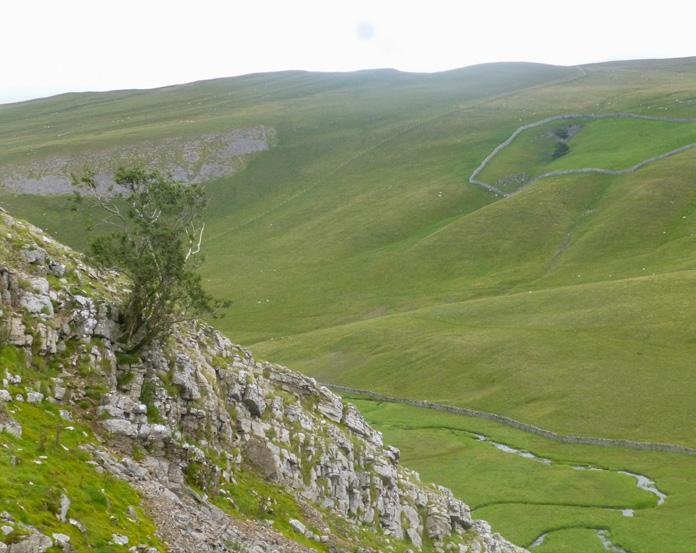
Currently, beyond walls and barns, there is little public goods financial support for all capitals through the new agri-environment package of SFI and ELMS. Given the Multiple Capital Landscape Account results for Little Asby Common we believe this is an oversight which needs rectification quickly.
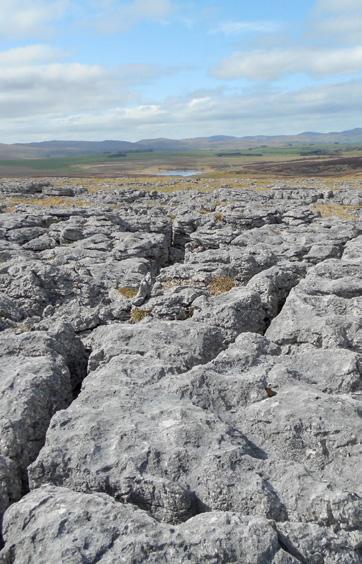 Limestone Pavement
Limestone Pavement
Cultural Capital £55.2m to £17.3m Natural Capital £2.93m to £1.19m Human Capital £1.92m to £726k Social Capital £1.15m to £1.12m Financial Capital £876k all scenarios LITTLE ASBY COMMON MULTIPLE CAPITALS SUMMARY REPORT Research commissioned by Friends of the Lake District 18
Potts Beck
Recommendations:
1. Accept landscapes are a product of multiple capitals.
2. Adopt a Multiple Capitals Assessment for Landscape and its process of change.
3. Adopt a Multiple Capitals Landscape Accounting system to closer reflect the realities of landscape management and change.
4. Select alternative landscape types and commission comparator studies to check efficacy of process including a wider public WTP survey.
5. Commission research to develop better techniques to measure and financially value human and social capital to avoid double accounting and be more accurate.
6. Actively acknowledge the Public’s perception that cultural capital is of at least equal importance as natural capital.
7. Develop a cross-departmental rural landscape fund which supports all types of capital development with the aim to recover nature, address climate change and support cultural landscapes, whilst at the same time building resilience in rural communities.

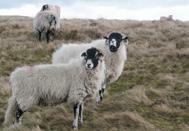



8. Extend ELMS to include human, social and cultural capital prescription and project funds.
 Sunbiggin Tarn
Eyebright
Birdlife
Cairn
©
Rob Fraser
Sunbiggin Tarn
Eyebright
Birdlife
Cairn
©
Rob Fraser
LITTLE ASBY COMMON MULTIPLE CAPITALS SUMMARY REPORT Research
19
Long View Tree & Limestone Pavement
commissioned by Friends of the Lake District
BY LOIS MANSFIELD | ENVIRONMENTORS, JAN
 & LAURA PARTINGTON | FRIENDS OF THE LAKE DISTRICT
& LAURA PARTINGTON | FRIENDS OF THE LAKE DISTRICT

Investigating the Public Benefits of Little Asby Common Using a Multiple Capitals Approach SUMMARY REPORT AUGUST 2023
DARRALL
Friends of the Lake District, Murley Moss, Oxenholme Road, Kendal, LA9 7SS Tel: 01539 720788 | Email: info@fld.org.uk | Website: www.friendsofthelakedistrict.org.uk Charity Number: 1100759 | Company Number: 4878364 Research commissioned by Friends of the Lake District








































 Walls Bield
Lime Kiln
Little Asby Treefold
Cast Iron Signpost
Archaeology Excavation
Walls Bield
Lime Kiln
Little Asby Treefold
Cast Iron Signpost
Archaeology Excavation







 Limestone Pavement
Limestone Pavement





 Sunbiggin Tarn
Eyebright
Birdlife
Cairn
©
Rob Fraser
Sunbiggin Tarn
Eyebright
Birdlife
Cairn
©
Rob Fraser
 & LAURA PARTINGTON | FRIENDS OF THE LAKE DISTRICT
& LAURA PARTINGTON | FRIENDS OF THE LAKE DISTRICT
